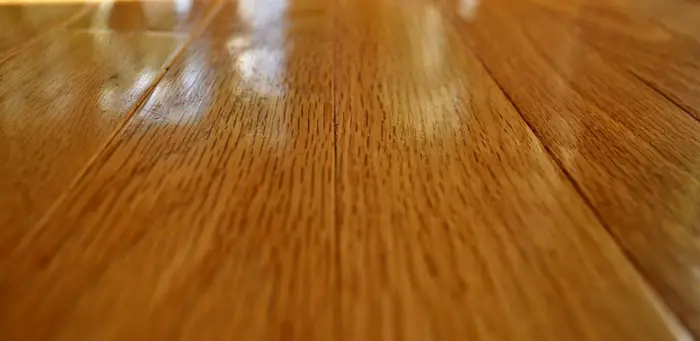Wood, which is known to soak up and retain water, creates an ideal environment for mold and mildew to grow and spread. If your furniture, baseboards, or trim has been affected, we will show you how you can effectively clean mold from wood. One thing you need to keep in mind is that you need to act with speed. Acting fast will not only make your work easier but will also ensure that mold doesn’t accumulate to a level that it poses a threat to your family. As long as the spores have not spread to a larger area (over ten square feet), you can remove them effectively without needing professional help.
Here is a proven procedure to remove and clean mold from wood.
Tools and materials that you need
- Air mask
- Safety goggles
- Rubber gloves
- Dishwashing detergent
- Bleach
- HEPA- filtered vacuum
- Dishwashing detergent
- Soft-bristled scrub brush
- Sandpaper
- Sponge
- Distilled vinegar in a sprayer
Step One
The first thing to do before you go near molds is to wear your protective gears. Wear your rubber gloves as well as safety goggles. Put on an air mask to keep mold spores from getting into your lungs. If you will use a cleaning solution with a bleaching agent, it is important to have protective outerwear on to safeguard your clothing against any stains that may be caused by bleach splashes.
Caution!
There are several types of molds that are highly toxic. Therefore, if you are highly allergic to a heavy infestation or mold inside your home, it is good that you call a professional to analyze the type of mold to know if they are toxic or not. You can inquire or call your local public health department for mold-testing advice.
Step 2
Using a vacuum cleaner equipped with a HEPA filter, vacuum the wood affected by mold spores to remove any loose spores as well as any other accumulated debris and dirt. Once done, empty the canister or vacuum bag and pour the dirt into a plastic bag outside your house. Tightly seal the bag and dispose it to a trashcan.
Step 3
If mold has attached to wood that is either stained or painted, that means it has not penetrated. You can, therefore, use a mild cleaning solution and a simple mixture of warm water and dishwashing detergent to clean it. Put a soft-bristled brush into the soapy water you have just prepared and then gently apply to the moldy area. If the results are unsatisfactory, opt for vinegar, which is known to be an effective mold killer.
Pour vinegar into a spray bottle and sprint the mold. Allow it to sit for an hour to disintegrate the mold spores. After that, proceed to scrap and wipe down the mold on the wood with a clean, damp towel. Ensure to clean all of the mold spores. Use a clean rap to wipe down the wood to restore its shiny appearance.
Step 4
Irrespective of whether the wood is raw or finished, if mold spores have penetrated, the only option you have is to use a stronger solution that is capable of killing spores settling beneath the surface of the wood. To make this solution, mix one part detergent, 20 parts warm water, and 10 parts bleach. Apply the resultant solution to a moldy area using a stiff-bristled brush or a scrub sponge, then allow the solution to dry on the wood.
Step 5
If mold persists even after applying a stronger solution and scrubbing, it is time to use sandpaper. At first, it might not seem an obvious solution to clean mold from wood. But despite it seeming counterintuitive, sanding is the only way to reach those molds that have penetrated beneath the surface of the wood.
Sand gently over the affected area until there is no more sign of mold. After that, you might need to refine the wood, not only for purposes of appearance but also to prevent any future outbreak.
Finally, dispose of any rags and towels that came into contact with the mold to avoid spreading it to other areas. Also, try to figure out how you can limit the amount of moisture that is present in the area you have been working on to prevent recurrence of mold.
Tips to Prevent Mold
Now that you have learned how to remove and clean mold from wood, you will want to prevent it from attacking your wood in future. The key to preventing mold attack is to keep an area dry; control dampness. Most infestations occur in damp areas, in attics, and walls where water leaks in from outside. Also, basements are frequently attacked due to their poor foundation drainage. Keeping crawlspaces dry, stopping seepages, ensuring good ventilation in roof space, and preventing water from leaking to your inside walls are the best ways to keep mold at bay.
Mixing mildewcide with pain is also an effective way of controlling surface mold in rooms that experience dampness such as bathrooms and in shady areas. Many coats already are mixed with mildewcide. Check the list of ingredients in the paint and if its lacking you can mix it yourself but you might void the warranty given.

Techniques for Cleaning Surface Mold
Surface mold can grow in almost any damp location, such as grout lines of a shower room with ceramic tiles. However, they are easy to clean as you will only need to make a mild cleaner mixture of 1 qt., water, ½ cup bleach, and a little detergent. Bleach is meant to kill the mold, while the detergent is meant to help lift mold spores off the space for easier cleaning and rinsing. This combination prevents it from returning as fast. You can use a mildew cleaner from hardware stores.
Even if you are cleaning a small area affected by mold, it is important to protect yourself to prevent mold and bleach solution from coming into contact with your skin. Therefore, make sure to have rubber gloves and goggles on.
If mold persists even after light scrubbing, reapply the cleaning mixture and allow it to settle for a few minutes. Lightly scrub again. Allow the area to dry and apply a grout sealer to tile joints to kill any remaining mold spores.
Caution
Never mix ammonia or any detergent with ammonia with bleaching agent as it can form a poisonous gas.
There you have it! A simple guide on how to remove and clean mold from wood. Share with us in the comment section below other ways you normally use to clean molds from wood.


